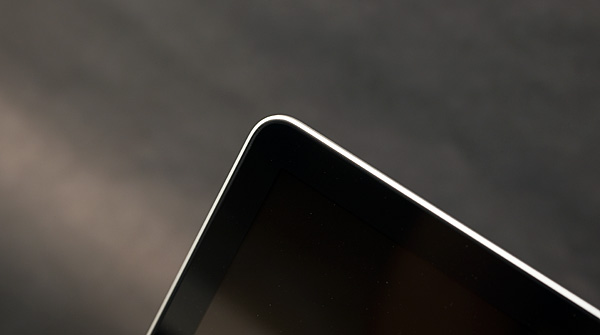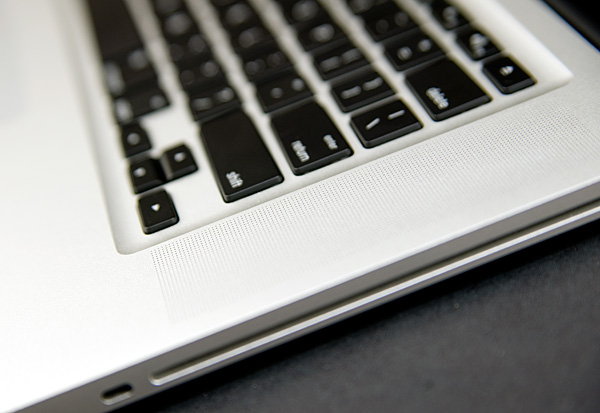Apple's 15-inch Core i5 MacBook Pro: The One to Get?
by Anand Lal Shimpi on April 14, 2010 10:38 PM EST- Posted in
- Mac
- MacBook Pro
- Arrandale
- Core i5
- Laptops
Final Words
Last year's unibody MacBook Pro update didn't do much for performance, but it did wonders for battery life. The huge increase in battery capacity meant Apple's entire pro line of notebooks could be used on cross-country flights or even during a long day of meetings without needing a recharge.
If you needed a Mac laptop at the end of last year, the 2nd gen unibody MacBook Pro was great simply because of its battery life under OS X.
The new Arrandale MacBook Pro delivers the same (or better) battery life compared to last year's model but with anywhere from 0 - 50% better performance. Apple is also offering some nice options including a higher resolution screen for the 15-inch model.

If performance matters to you, this is the MacBook Pro you've been waiting for. While I don't believe owners of the previous generation unibody need to upgrade, if you've got an older notebook this is the one to get.
The new model isn't without its drawbacks however. The most obvious of which being price. At $1799, even the cheapest 15-inch MacBook Pro is very expensive. You're paying for the design, build quality and ultimately the right to use OS X. If those things don't matter to you (particularly the OS X item) then you'd be much better off with an ASUS or Dell. The only consolation here is that the 2.4GHz Core i5 is fast enough if you thought the previous generation was quick. While I'm not sure about the 2.53GHz Core i5, the i7 is definitely worth it if you plan on keeping the machine for a while. I originally stated that I didn't believe the i7 to be worth the upgrade. Since then I managed to get my hands on an i7 system and noted its greater-than-expected performance; my conclusion has been updated to reflect that. The 22% increase in total system cost comes with a 11 - 15% increase in performance in most CPU intensive applications thanks to the extra clock speed and cache. It's a shame that this sort of performance isn't available in the 13-inch model yet, although I suspect it's related to the next point:
With a Core i5 and GeForce GT 330M, the new MacBook Pro can get uncomfortably warm under use. I found that the previous generation unibody ran cooler. Intel expects to see Arrandale power consumption go down sometime after the middle of the year with a future rev of the processor. I'm guessing that's what'll be used in the inevitable Fall update to the new MacBook Pro lineup.
Apple's inclusion of auto switching between the Intel HD Graphics and NVIDIA GeForce GT 330M is nice, however I'd still like the ability to force the GT 330M off entirely when I'd like to keep my lap cooler.
For being as forward looking of a company as it is, Apple continues to drop the ball on making a good SSD standard. Intel's X25-M G2 isn't expensive, what's stopping you Apple?

If you're curious about what's next, I have two words for you: Sandy Bridge. Due out sometime in Q1 2011, Sandy Bridge looks incredible based on early performance data. No word on when we'll see it in notebooks but if you like torturing yourself, waiting for Sandy Bridge will pay off.










114 Comments
View All Comments
oldbriones - Thursday, April 15, 2010 - link
I am disappointed, once again, that apple slapped on crappy TN panels to their MacBook Pro.Use of IPS panels in iPad, new iMacs, and new Cinema Displays were welcome changes for the better
(far superior viewing angle, color integrity). Why not in the Pro line of MacBook ?!
beginner99 - Thursday, April 15, 2010 - link
to increase margins. fanboys will buy it anyway (no sane person would for this price...)It's like 800$ extra compared to similar dell, hp,... models.
that_guy_mike - Thursday, April 15, 2010 - link
by that logic no one would drive a mercedes or bmw either since you can get a honda for way less, and they're clearly the same since they are all just cars.The0ne - Thursday, April 15, 2010 - link
That's retarded. When referring to laptop the margins/difference in hardware and much less than comparing vehicles. It's the same hard drive, same memory, etc. A car may be a car but the process of getting there is absolutely different, less being the same part.Now if you were to say, why not buy a car with almost the same parts and materials, slap on a Mercedes logo, and charge a premium for it then that would make more sense.
mikesmithson - Friday, April 16, 2010 - link
You mean how like the difference between a Honda Accord and an Accura TL? Like how they use a lot of the same parts... Accord starts at $21,000; TL at $35,000...maler23 - Thursday, April 15, 2010 - link
Prolly the odd man out, but I'm waiting for a review of the 13 inch model. I was already pretty much decided on the MBP 13in anyways, so any upgrades for the same price is a perk.The lack of Arrandale kinda hurts though; I'm also wondering if the nVidia 320M makes things run any hotter. I'd love to hear a good reason why Apple skipped the Core i3 and stuck with the Core Duo. I'm assuming it was a space concern due to the whole Intel/NVidia chip kerfuffle and they wanted to keep the same sized chassis?
Anand, any bets on an Arrandale update for the Fall for the MBP 13?
cheers!
-J
solofest - Thursday, April 15, 2010 - link
I second the request for a 13" review. I'd like to see how the 320M stacks up, as well as some real world battery tests. Re: an Arrandale update for the 13" in the fall, sounds like Apple may as well wait until Sandy Bridge?solipsism - Thursday, April 15, 2010 - link
Ditto.The tests of Core-i3 and having to use Intel HD over a speed bump in C2D and Nvidia 320M tell me that Apple made the right choice. I can't see the 13" MBP maintaining the same price point or increasing the battery duration with a discrete GPU.
I think Anand is correct in that the a Fall release is inevitable. While this is is a decent update I think it is meant to be a stopgap for more radical changes. What should have come about 7-8 months later may jut 4-6 months later due to the Arrandale supply issue.
For the next release, the 13" MBP may have to drop the ODD to make room for the component and cooling, and to lessen the blow of the GPU cost. Apple obviously isn't going to offer Blu-ray so I'd say they are just holding onto the internal ODD until offering Mac OS X Restore Discs on a 16GB SD Card is more viable. I don't think they added SD to the 13" and 15" so many years after it was standard, just to say "me too". I think it'll be the new way to restore the disc. It's how I've been doing it for a couple years.
PS: I wish Anand would have mentioned the other aspects of this revision: audio over DisplayPort or HDMI, and force accelerated scrolling.
PPS: I don't recall seeing any mention of how Nvidia Optimus doesn't power down the IGP when the GPU is active. I'd like to see the power usage differences between Windows and Mac OS X on these machines now that Apple has graphics switching in place. It's too bad Optimus won't work under BootCamp.
Affectionate-Bed-980 - Thursday, April 15, 2010 - link
How easy is it to replace HDs in the new unibody MBPs? I have a 2008 MBP (15") and it takes a great amount of work to disassemble just to change out a hard drive. With HD prices so cheap, it's not too hard to buy a 500gb 7200 RPM drive and stuff it in. However, I'm often discouraged when it takes a lot of tampering. I've disassembled my Wii to mod chip it. I've disassembled camera lenses to blow out dust behind the front element, but I'm not the most hands on guy and I hate repacking things together. I often mess up there.solipsism - Thursday, April 15, 2010 - link
It's pretty simple. Check iFixit for the 2009 MBPs. You basically take the entire bottom off, about 10 screws, and then a 1-3 screws for the HDD. It'll takes you an extra 2 minutes over the previous models with the latch and door exposing the HDD and battery.